The Independent's journalism is supported by our readers. When you purchase through links on our site, we may earn commission.
Not just Brits and booze: How to do Paphos, Capital of Culture 2017, in two days
This seaside town in Cyprus has lots to offer, never more so than in its year as a torch-bearer for culture
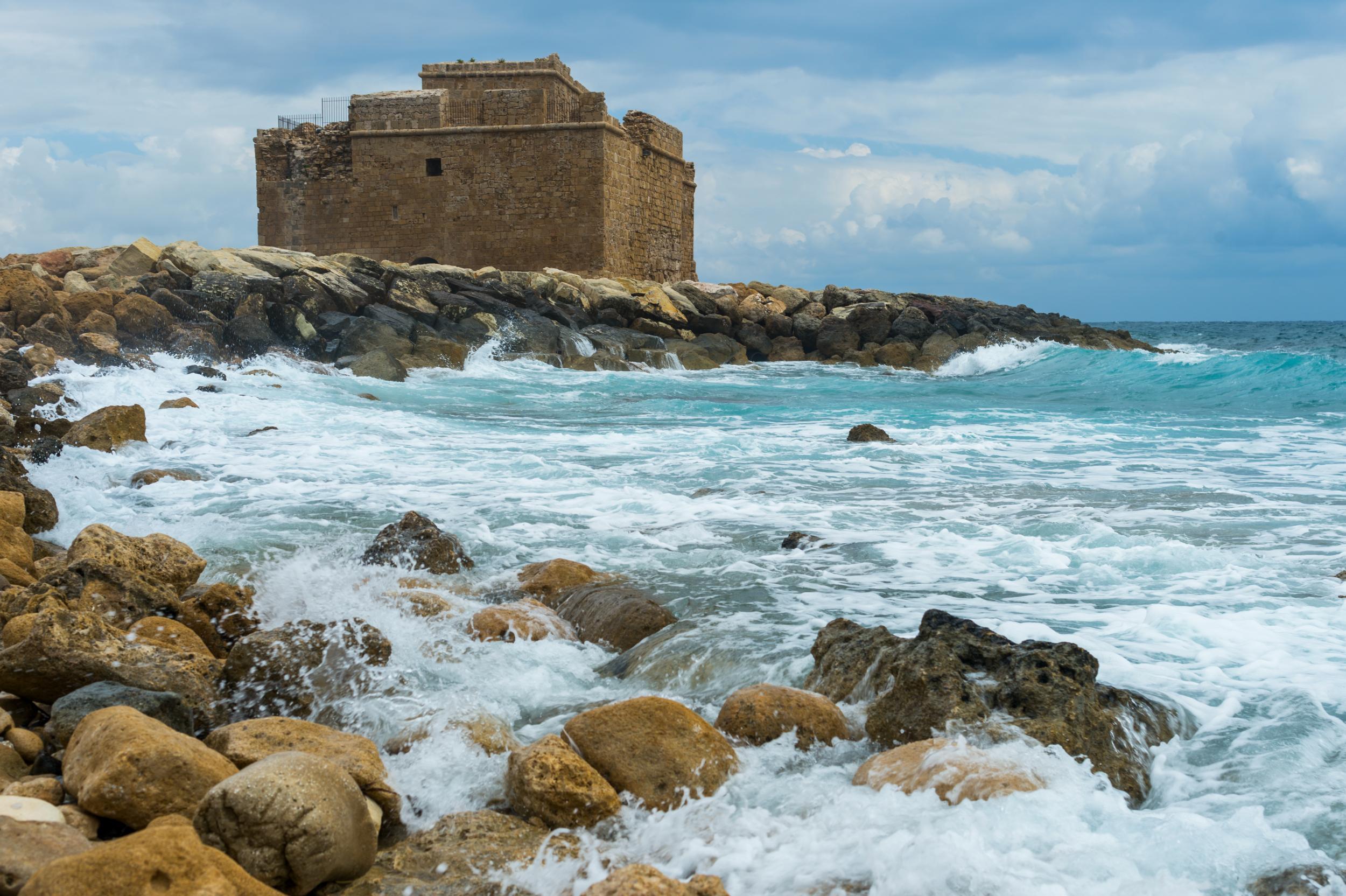
Your support helps us to tell the story
From reproductive rights to climate change to Big Tech, The Independent is on the ground when the story is developing. Whether it's investigating the financials of Elon Musk's pro-Trump PAC or producing our latest documentary, 'The A Word', which shines a light on the American women fighting for reproductive rights, we know how important it is to parse out the facts from the messaging.
At such a critical moment in US history, we need reporters on the ground. Your donation allows us to keep sending journalists to speak to both sides of the story.
The Independent is trusted by Americans across the entire political spectrum. And unlike many other quality news outlets, we choose not to lock Americans out of our reporting and analysis with paywalls. We believe quality journalism should be available to everyone, paid for by those who can afford it.
Your support makes all the difference.Why go now?
On the last weekend of January Paphos takes over as joint European Capital of Culture (along with Denmark’s Aarhus). The ancient port, soaked in Greek mythology and legendary birthplace of Aphrodite the goddess of love, is set around one of the most dazzling harbours in the Mediterranean.
In a sense Paphos has already been a city of culture for more than two millennia. Throughout 2017 it will be a happening place, drawing on its classical and mythological heritage as themes for a year-long “open-air factory of culture”. This will be made up of dance, musical and theatrical performances in parks, beaches and on the streets.
Get your bearings
Paphos is out in the far west of Cyprus where the mountains meet the sea. There are two distinct sectors: Ktima, the stately old town, uphill and inland, where there are elegant colonial houses and several museums; and Kato Paphos, the main tourist area of restaurants, souvenir shops, low-rise apartments and a few British pubs scattered around the harbour.
The resident population is only about 60,000 but numbers are swollen year round by tourists. One reason it was chosen as cultural capital is because it is a 12-month destination; winters are warm, mild and generally sunny with January temperatures often nudging 20C. Summer – the peak beach season – is hot, while spring and autumn are usually cool enough for sightseeing while warm enough to swim.
Day one
Take a hike
Stroll along the Kato Paphos waterfront (1) towards the harbour and castle, keeping the sea to your left. The east to west direction is important because it leads to the Paphos Archaeological Park (2) (open 8am-7.30pm every day, entry €4.50). It will take the rest of the morning to hike round the vast, Med-side ruins of Neo Pafos, an ancient city founded in the 4th century BC and the capital of Cyprus for nearly a millennium.
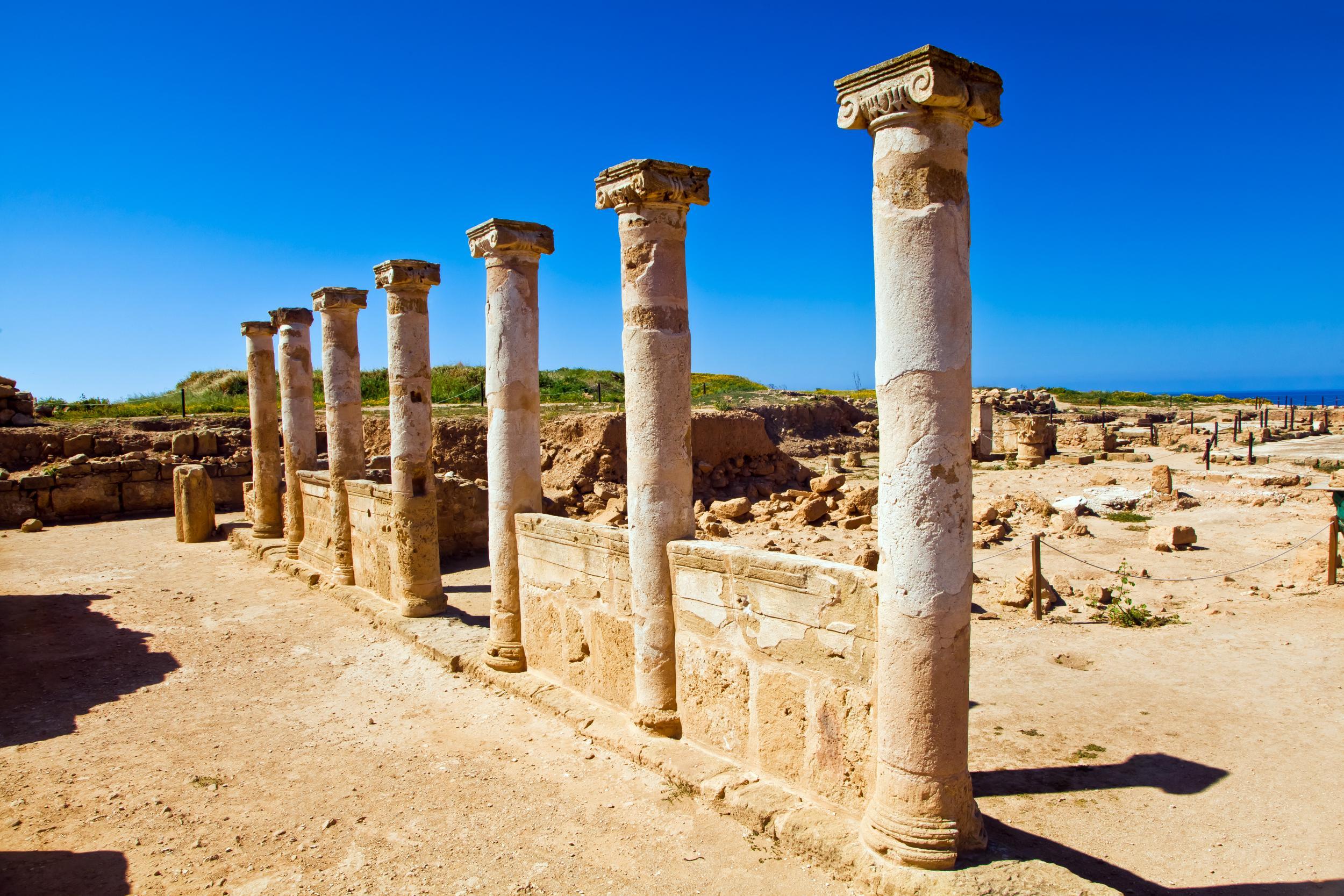
Stop at the House of Dionysos and prepare to be mesmerised by glittering mosaic floors depicting stories from Greek mythology. It is worth taking the time to follow some of these, such as the tragic tale of Phaedra and her bizarre love for her stepson Hippolytus.
Continue on round the park making sure not to miss more amazing mosaics at the Villa of Theseus, where the depiction of Theseus fighting the Minotaur in the labyrinth is astonishingly well-preserved and vivid. Then pass by the Agora (forum) and semi-circular Odeon theatre, on your way to wander among the arches and columns that are all that remain of the Saranta Kolones fortress, a vast Byzantine castle from the latter days of the Neo Pafos era.
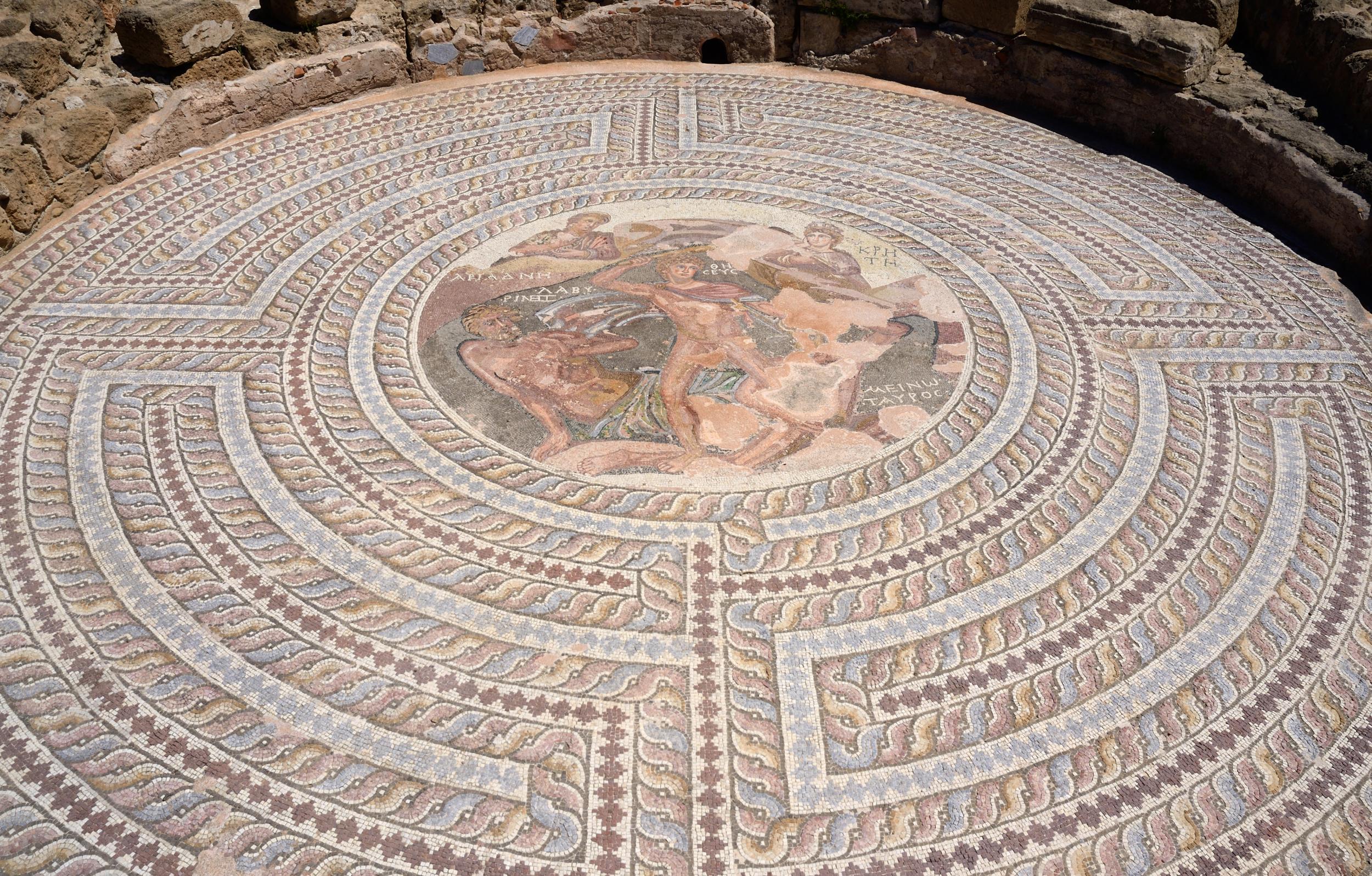
Lunch on the run
The archaeological park exit is bang next to the harbour. Bag a table at The Pelican (3) on Apostolou Pavlou Ave 102 (00 357 26 952500; no website) by the waterside for a seafood mezze of everything from soft-shell crabs to grilled cuttlefish and freshly-landed swordfish. It is on the pricey side but the setting, looking across to the medieval castle, is unimprovable.
Window shopping
Duck into the winding Kato Paphos backstreets (4) behind the rows of tat-peddling tourist shops along the harbourside main drag. You’ll find a bewildering amalgam of boutiques selling local jewellery, ceramics and handmade lace, all cheek by jowl with familiar-sounding department stores such as M&S or Debenhams (5). The latter is just behind the stone pillar where St Paul was tied up and whipped for spreading the news about Jesus Christ.
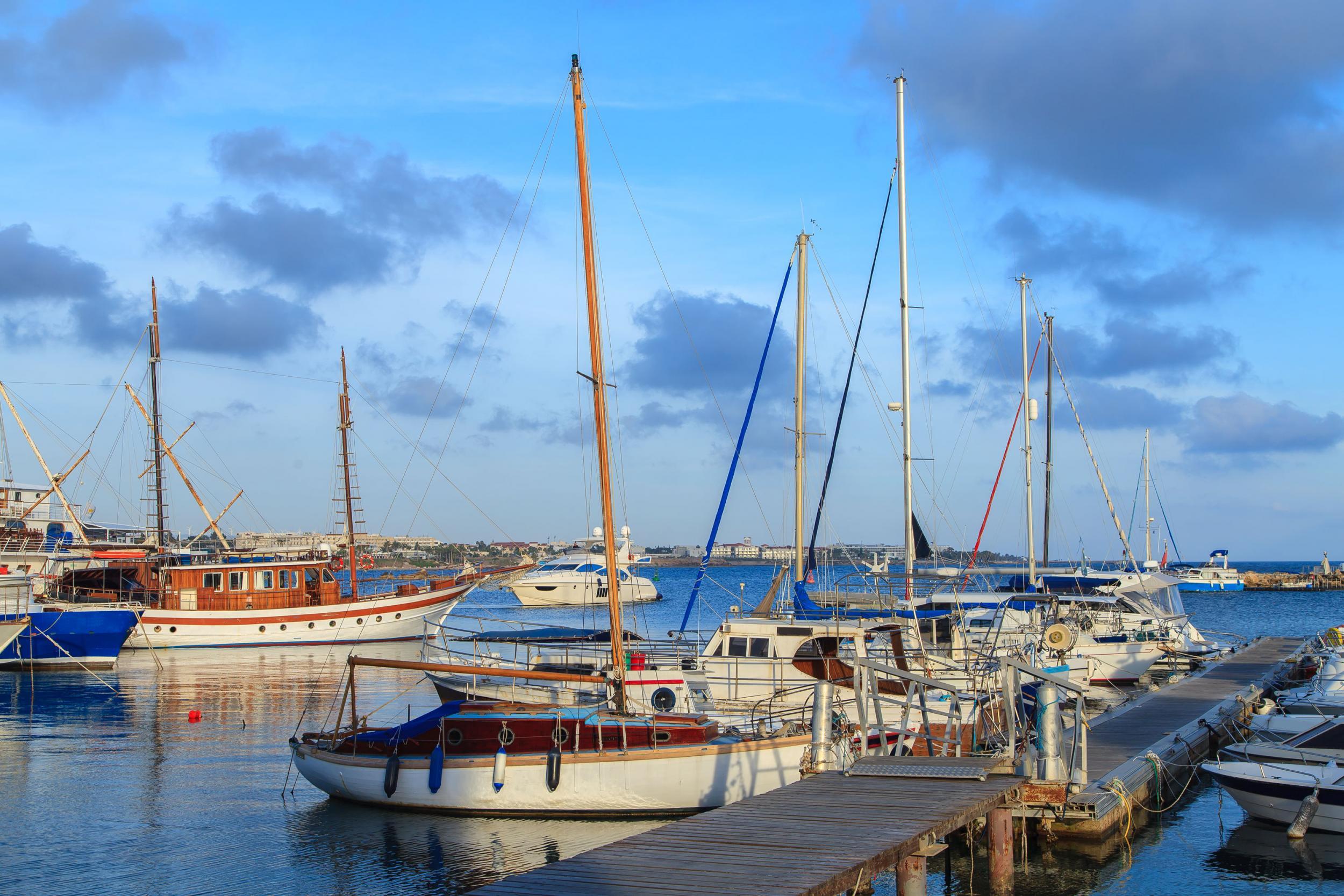
The best bargains in Cyprus, however, are for spectacles. Bring your prescription, choose your frames and get a new pair in 24 hours, all for around €50-60 at any of the numerous opticians.
Some shops are closed on Sundays and on Wednesday afternoons. In summer, some close from 1-4pm for a long lunch, but stay open till 8pm.
Take a view
The Axiotheo Hotel (6), at 2 Ivis Malioti Street (00 357 2693 2866; axiotheahotel.com), set into a hillside above Ktima or 10 minutes by taxi from the harbour, has the standout panorama. You don’t have to be staying here to sip a sundowner cocktail while soaking up views over the town, coastline and Mediterranean beyond.
Dine with the locals
Ktima, the old town, is the place to dilute tourists with Cypriots. Fetta’s (7) at Ioanni Agroti 33 (00 357 2693 7822; no website) is as traditional a taverna as you’ll find anywhere in Paphos, specialising in classic local dishes such as stifad, a rich stew of beef with onions and red wine, and koupepia (various ingredients, meaty or veggie, wrapped in young vine leaves).
There is no attempt at anything fancy or fussy. If you go the whole mezze hog, you’ll find it less fishy than at harbourside eateries. When booking, you can choose a table indoors or outside.
Day two
Sunday morning: out to brunch
Omikron Brunch, in a beautiful renovated old Ktima House (8) at 25 Martio (00 357 2695 5965; no website) will keep you away from the “Full English Served All Day” cafés found round the harbour. Inhale aromas of fresh ground coffee and sip homemade lemonade before poached eggs on muffins served with local twists, such as crumbled feta. It’s very chic and perhaps the only place in Paphos specialising in brunch. Open every day from 7am till 10pm.
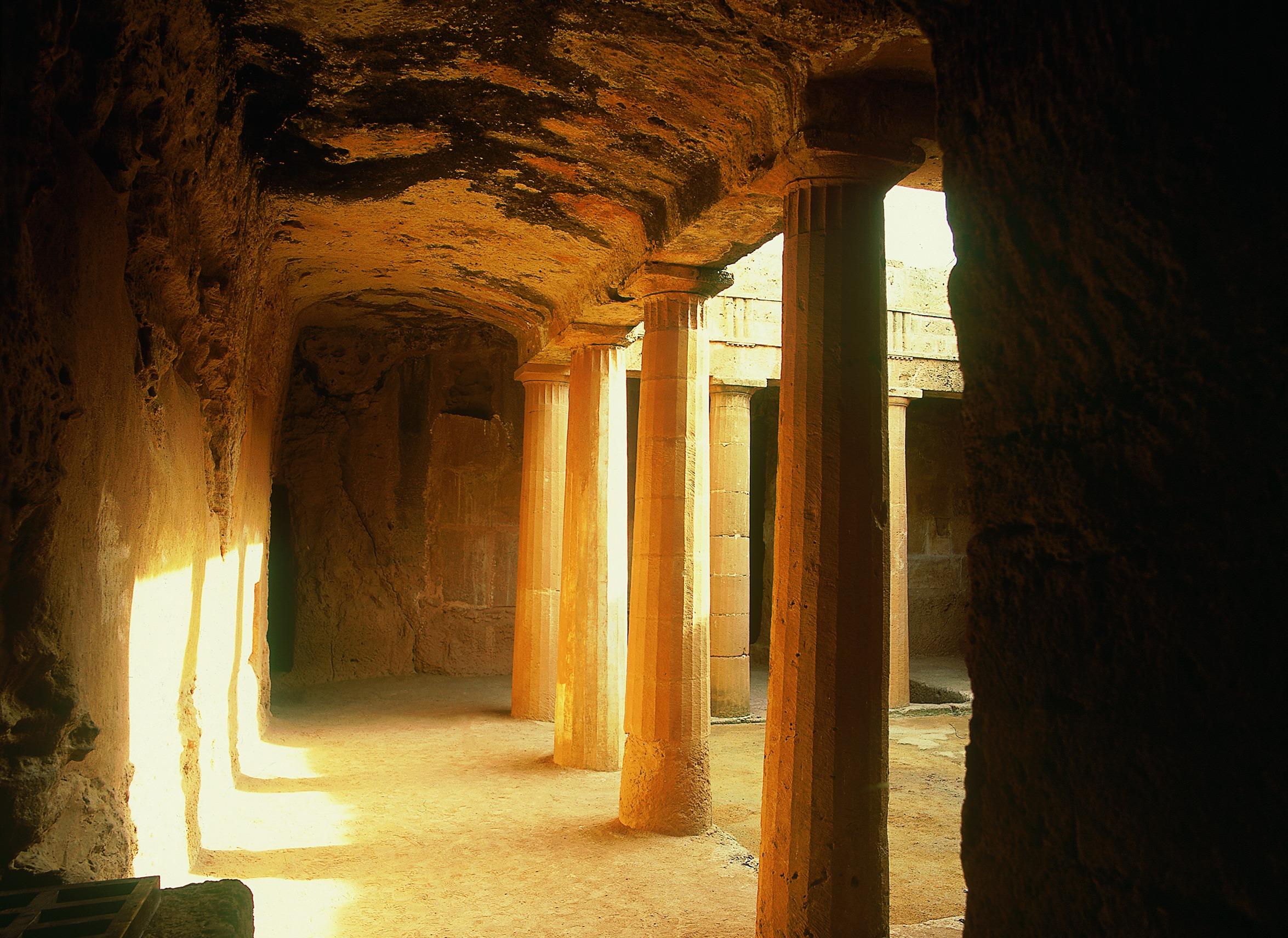
A walk in the park
Return to the harbour and follow the coastal path westwards. The scenery becomes increasingly wild with jagged rocks and crashing waves as you swing north round the headland. Make for the lighthouse beach bar (9) about 2km on, before retracing your footsteps. Or stop at one of the pebbly coves for a dip.
Cultural afternoon
The so-called Tombs of the Kings (10) (open 8.30am-7.30pm every day, entry €2.50) is another unmissable expanse of ancient wonders. Slightly confusingly, it forms part of the Paphos Archaeological Park (2), though the pair are separate. Scores of excavated tombs and burial chambers in soft, sandstone caves and pits dug into the ground make up this astonishing necropolis, dating from the 3rd century BC. However, they served as final resting places for local bigwigs, not royalty as the name suggests.
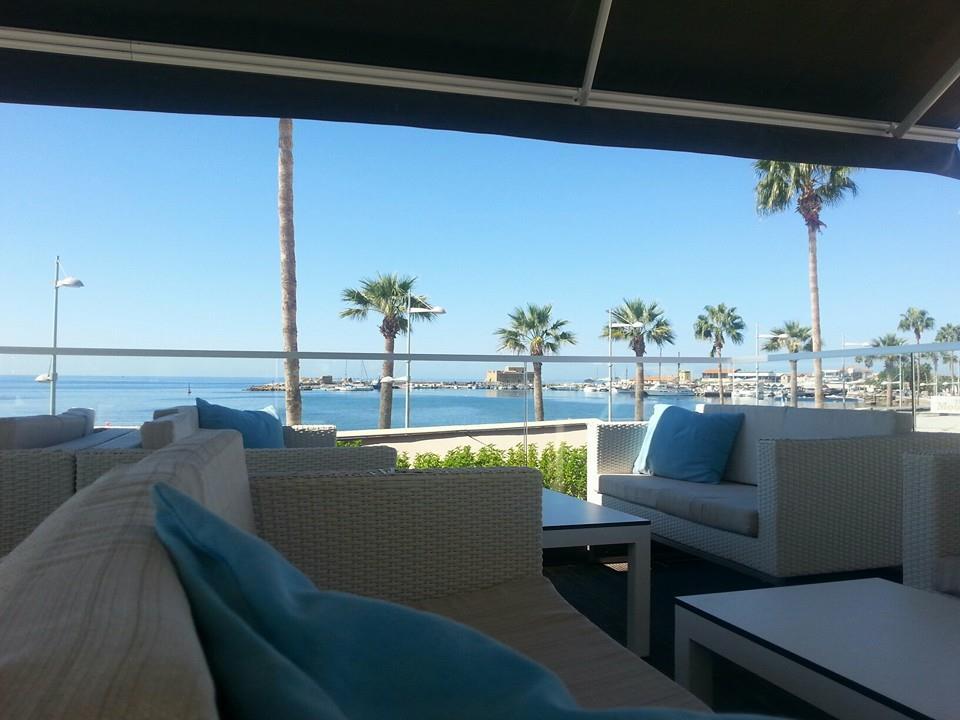
An aperitif
As the sun sets, Cypriots sip Koumantaria, the tawny-coloured local “wine of kings and king of wines” grown in the foothills of the Troodos mountains. It is sweet, so often described as a dessert wine, but to go native try it with nibbles before dinner at Mare Mare bar (11) on Poseidon Avenue (00 357 2693 1987; no website), while watching evening colours dancing on the water.
Getting there
Paphos airport (12) is 8km south west of town. Shuttle bus 612 runs to Paphos harbour, 613 to Ktima (both €1.50 one way). Taxis are metered and cost roughly €30, one way.
Staying there
The quieter, smarter end of Kato Paphos is east of the harbour where there is a string of stylish five-star hotels. It is hard to beat the marble splendour of the Annabelle (13) (annabelle.com.cy), set in lush gardens next to a stony beach right by the waterside. Doubles from €205, including breakfast.
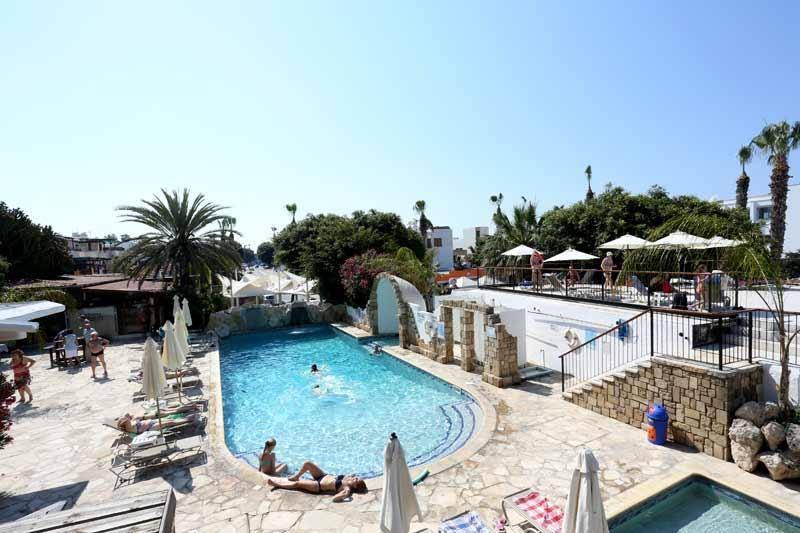
There are plenty of mid-range options around the busier (yes, noisier) harbour area. Three-star Dionysos Central Hotel (14) (dionysoshotelpaphos.com) is moments from the castle and beach, and good value. Doubles from €89, including breakfast.
Family-run Axiothea Hotel (15), at 2 Ivis Malioti Street (axiotheahotel.com), is a traditional little no-frills place in the old town. It makes up for the lack of pool and its distance from the sea with the warmest of welcomes, and a commanding position (see Take a view, above). Doubles from €50, including breakfast.
Expert Cyprus operator Sunvil (sunvil.co.uk) also offers three-night and seven-night breaks to Paphos, including accommodation and return flights, from £394 per person.
Join our commenting forum
Join thought-provoking conversations, follow other Independent readers and see their replies
Comments